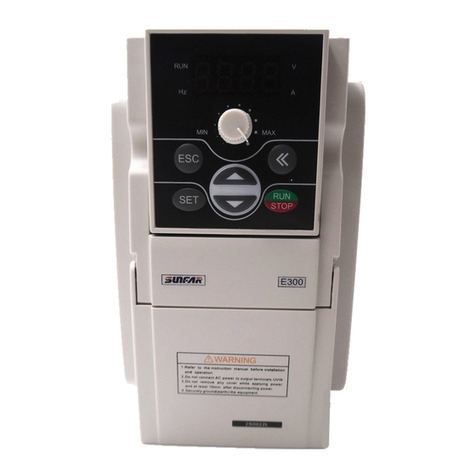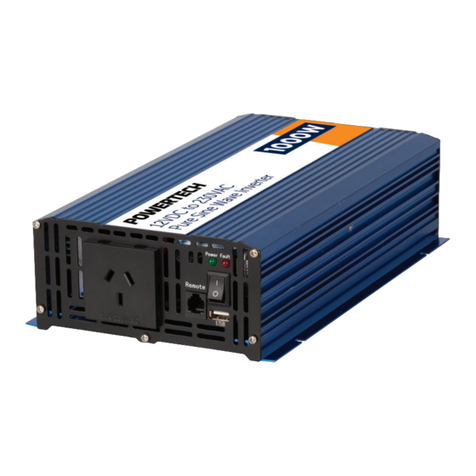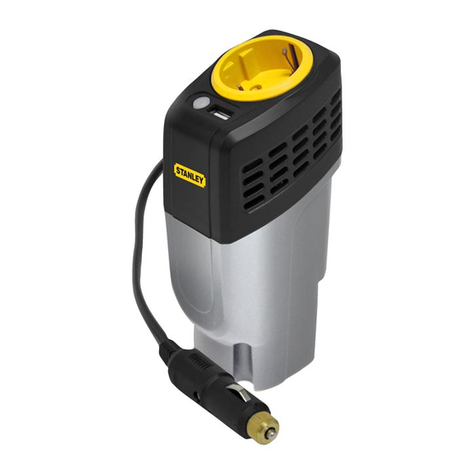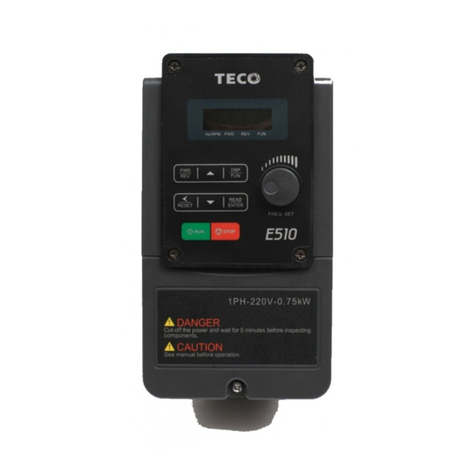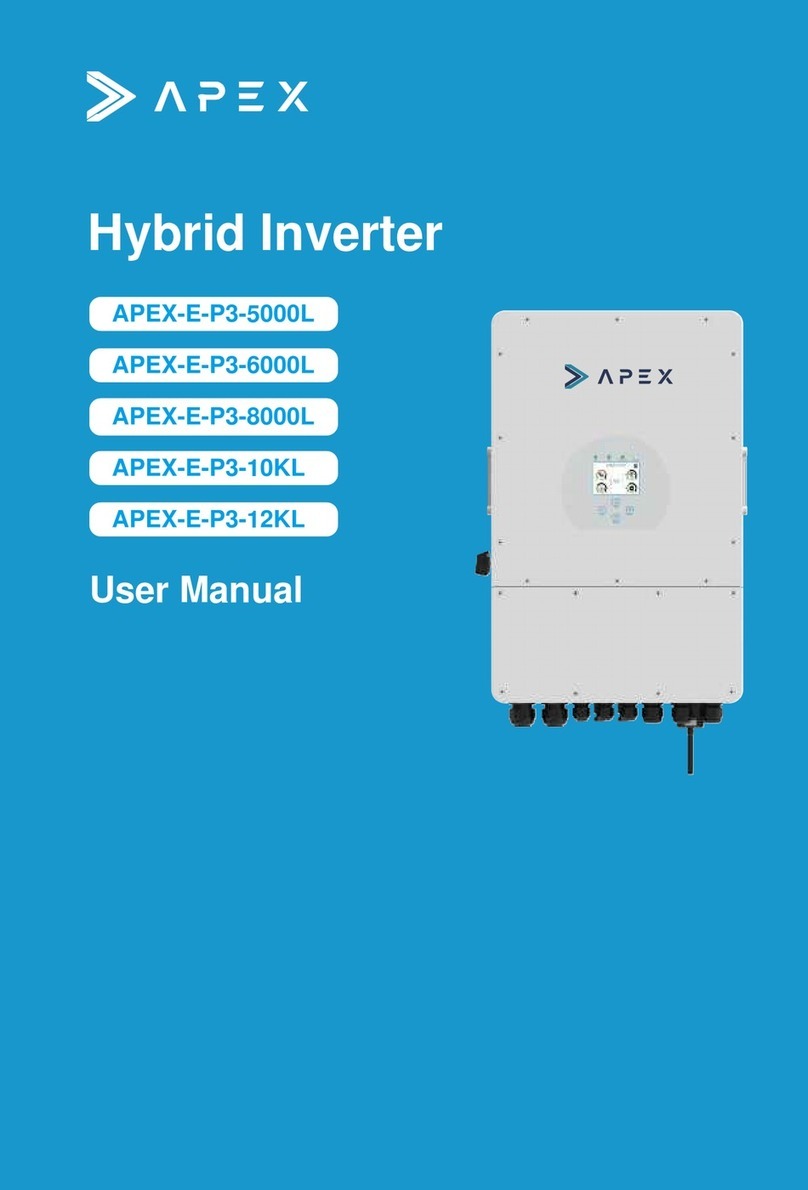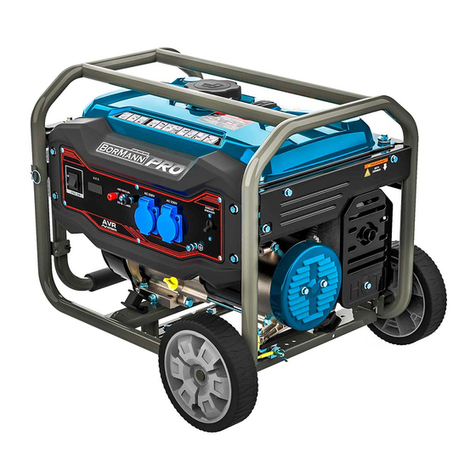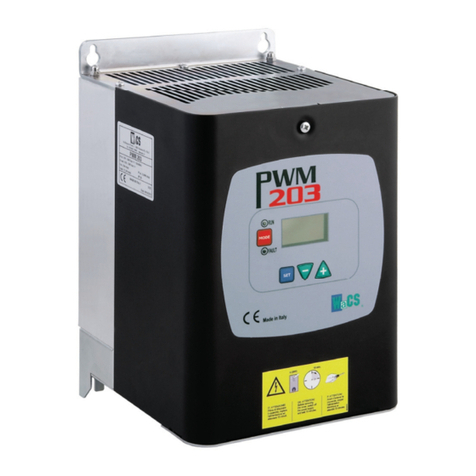Eguana Technologies Evolve 0513U Installation manual

Eguana Evolve™
Model
Evolve 0513U
Grid Support Utility Interactive Inverter
& Integrated Lithium Battery
For use only with battery model
LG Chem EM048126P3S7
Installation & Start-up Guide

IMPORTANT SAFETY INSTRUCTIONS
SAVE THESE INSTRUCTIONS
This manual contains important instructions for the Eguana Evolve™Energy Storage System –
including the Power Control System (PCS) and base model battery cabinet installation and
operation. The AC Battery is expandable with the addition of up to two more battery cabinets.
Refer to the manual, “Eguana AC Battery Expansion Cabinet Installation Guide” for more details if
your systemcontains additionalbattery capacity beyond the base model. The Eguana AC Battery™
components described by this manual are intended to be used as part of an Energy Storage system
and installed per all local building codes and regulations in addition to the National Electrical Code,
ANSI/NFPA 70 (for US) and Canadian Electrical Code (for Canada).
CAUTION: Hazardous Voltages! This inverter contains hazardous voltage and energy that
may be lethal. It may only be installed by qualified personnel who have read this manual and are
familiar with its operation and hazards. The following safety procedures should be followed:
1 Only connect the PCS cabinet to a compatible electrical service as defined in the model
specifications. The PCS must be connected to a dedicated branch circuit in the main electrical
panel.
2 An external disconnect switch shall be provided in the end installation by others for the AC Grid
output circuit.
CAUTION! This equipment contains high energy lithium batteries. Qualified and trained
personnel should wear protective clothing and equipment when working inside the battery cabinet
and/or with battery modules.
3 The PCS is compatible with the LG Chem battery model EM048126P3S7 only.
CAUTION! The batteries provided with this system must be charged only by the PCS
included as part of the energy storage system. Do not attempt to charge batteries with any
other charger device or connect any devices directly to the DC battery bus.
4 Ensure proper electrical grounding in accordance with code requirements.
5 Ensure proper airflow path for active cooling.
6 Never operate system in a manner not described by this manual.
7 Only qualified personnel should service this product.
8 Ensure all covers are securely fastened after installation is complete.
9 This product must be stored indoors in an environmentally conditioned location prior to
installation, protected from rain and exposure to any hazardous chemicals.
10 Do not attempt to operate this product if there is any physical evidence of damage to any of the
cabinets or internal components.
CAUTION! This equipment is heavy. Mechanical lifts are recommended for safe installation.

Table of Contents
Contents
1 INTRODUCTION..............................................................................................................................................................................1
1.1 ABOUT THIS MANUAL –TARGET AUDIENCE ...............................................................................................1
1.2 GLOSSARY.............................................................................................................................................. 1
1.3 INITIAL INSPECTION OF MATERIAL LIST......................................................................................................2
1.4 SPECIAL TOOLS &HARDWARE .................................................................................................................. 2
2 INSTALLATION SITE PREPARATION...........................................................................................................................................3
2.1 OVERVIEW OF PCS AND BATTERY COMPONENTS ......................................................................................3
2.2 INSTALLATION AREA REQUIRED TO WALL MOUNT PCS AND BATTERY:.......................................................3
2.3 INSTALLATION PLAN –POWER AND COMMUNICATION CIRCUITS....................................................................4
2.4 SLD -AC COUPLED PV SYSTEM WITH BACK-UP POWER OPERATION ........................................................5
3 PCS AND BATTERY CABINET WALL-MOUNTING INSTRUCTIONS ..........................................................................................6
4 PCS / BATTERY INTER-CABINET WIRING...................................................................................................................................8
4.1 BATTERY POWER CABLE CONNECTIONS ....................................................................................................8
4.2 BATTERY BMS TO PCS COMMUNICATION CONNECTION.............................................................................9
5 SYSTEM ELECTRICAL WIRING ...................................................................................................................................................9
5.1 AC POWER CONNECTIONS......................................................................................................................10
5.2 CHASSIS GROUNDING............................................................................................................................11
5.3 COMMUNICATION WIRING TO THE ENERGY MANAGEMENT SYSTEM –RJ45 PIN-OUT.................................11
6 START-UP SEQUENCE ................................................................................................................................................................12
7 OPERATION ..................................................................................................................................................................................14
8 PCS DISPLAY PANEL ..................................................................................................................................................................14
8.1 LED DISPLAY INDICATORS.....................................................................................................................14
8.2PCS DISPLAY PANEL INDICATOR SUMMARY. ............................................................................................14
8.3 SERVICE BUTTON ..................................................................................................................................15
9 MAINTENANCE.............................................................................................................................................................................15
10 TROUBLESHOOTING.................................................................................................................................................................15
11 SPECIFICATIONS ......................................................................................................................................................................16
Table 1: PCS Electrical / Mechanical Ratings..........................................................................................................................16
*- Refer to section 2.1 for operating characteristics in compliance with the UL 1741 SA standard. ........................................16
Table 2: PCS Field Wiring Ratings –AWG / Torque ...............................................................................................................17
Table 3: Battery Cabinet Electrical / Mechanical Ratings ........................................................................................................17
Table 4: Battery Cabinet Field Wiring Ratings –AWG / Torque..............................................................................................17
11.1 UL 1741 SA GRID SUPPORT UTILITY INTERACTIVE INVERTER SPECIFICATIONS .....................................18
Table 5: UL1741 SA grid support functions. ............................................................................................................................18
Table 6: Measurement tolerances for grid support functions...................................................................................................18
2.1.1 Volt-VAr Mode.................................................................................................................................................................18
Table 7: Volt-VAr characteristics..............................................................................................................................................18
Table 8: Power factor characteristics.......................................................................................................................................18
11.2 THERMAL PERFORMANCE:CHARGE /DISCHARGE CURVES ....................................................................19
APPENDIX A: ELECTRICAL BLOCK DIAGRAM OF INTER-CABINET WIRING ...........................................................................20

1
1 Introduction
Throughout this manual, the following symbols will be used to highlight important information and procedures:
Symbol
Definition
Symbol
Definition
WARNING! A dangerous voltage or other
condition exists. Use extreme caution when
performing these tasks.
Meter measurement required.
CAUTION! This information is critical to the safe
installation and or operation of the inverter.
Follow these instructions closely.
Torque rating critical to operation.
NOTE: This statement is important. Follow
instructions closely.
Login to the remote monitoring system
for operating status
1.1 About this Manual –Target Audience
This manual is intended to be used by qualified service and installation personnel for the purposes of product installation.
This manual contains instructions for the installation and start up sequence of the Eguana Evolve™home energy storage
system; including the PCS and master battery cabinets. This product is permanently wired to the home electrical service,
and must be installed by a licensed electrician only. This system also includes a combined energy management system
and automatic transfer switch in a separate panel, herein defined as the ACXIS panel. Installation and commissioning
of the ACXIS panel is not covered within the scope of this document, however, it is referenced where necessary for
installation planning.
The ACXIS panel relies on an AC coupled PV solar source to charge the batteries as part of the energy management
control algorithms. A PV solar system must be installed in conjunction with this energy storage system. The ACXIS
panel contains a built-in automatic transfer switch (ATS) to isolate critical loads during a grid outage. When this product
is not in service, critical loads are routed directly to the grid panel via the ATS.
The battery capacity of this system can be expanded by adding additional cabinets adjacent to the master battery cabinet.
Expansion of battery capacity is not covered within the scope of this document. Please refer to the following documents
for comprehensive information to support the Evolve home energy storage system installation.
E-gear ACXIS panel installation guide
Evolve –LE Expansion Battery Cabinet Installation Manual
1.2 Glossary
Term
Definition
Term
Definition
AC
Alternating Current
LED
Light Emitting Diode
ARC
Auto Recovery Circuit
NC
Normally Closed
CPU
Central Processing Unit
NO
Normally Open
DC
Direct Current
PCS
Power Control System (Inverter)
EMS
Energy Management System
PE
Protective Earth
ESD
Electrostatic Discharge
PV
Photo-Voltaic
ESS
Energy Storage System
RF
Radio Frequency
GND
Ground
SOC
State Of Charge (Battery)
SOH
State of Health (Battery)
EMS

2
1.3 Initial Inspection of Material List
The system components supplied with your Eguana Evolve™ Energy Storage system are shown below. Each
component should be inspected visually for any damage that may have been caused by shipment. If damage is present,
please contact your local distributor.
1.4 Special tools & hardware
In addition to standard tools required for cabinet
mounting, the following tools should be readily
available to interconnect the battery and PCS
cabinets.
Torque wrench
17mm socket wrench (battery negative main
power connection).
10mm socket wrench (battery +/- module
power connections).
3/8” socket wrench (battery positive main
power connection).
RJ-45 crimp tool (EMS to PCS
communication cable) and RJ-45 connectors.
Mounting hardware for wall bracket (load
bearing) –M8 (5/16”) hardware suitable for
use with mounting structure.
Item
Description
1
ACB05-LP PCS cabinet
2
ACB05-LB Master battery cabinet
3
Wall bracket
4
BMS –PCS high level communication cable
5
PCS and battery cabinet levelling brackets
6
Cabinet coupler plates
7
Cabinet coupler gasket
Cabinet coupler hardware (not shown)
4 ea M4 bolts
4 ea M4 star washers
4 ea M4 lock nuts
8
ACXIS panel
1
2
3
4
5
6
7
x2
x2
8

3
2 Installation Site Preparation
Before installing the Evolve home energy storage components, read all instructions and warnings in this manual.
CAUTION! All electrical installation work should be performed in accordance with local building and electrical
codes.
WARNING! Isolate the PCS from all energy sources prior to electrical installation by means of disconnects,
breakers or connectors. Failure to properly isolate either AC or DC sources may result in serious injury or
death. This system will generate an AC voltage at the off-grid terminals when DC source is applied.
CAUTION! The PCS cabinet weighs up to 145 lbs (65 kg), and the battery cabinet weighs up to 223 lbs (102 kg).
Handle with care. The wall to which the system is mounted must be load-bearing rated according to the local building
code. Mechanical lifts are recommended to position cabinets on the wall bracket.
NOTE: All interconnecting cables are limited in length, and designed specifically for adjacent cabinet mounting using
the manufactured wall brackets.
CAUTION! Do not install in direct sunlight. Battery performance is dependent upon operating ambient
temperature. Radiant heat absorbed in direct sunlight will greatly reduce the performance of the battery, and will
prematurely cause degradation of the display indicator panel on the PCS cabinet. The battery modules are rated for
full power operation between -10C to +40C.
2.1 Overview of PCS and Battery components
1. The cabinets can be installed in an indoor and outdoor non-corrosive environment (not marine environment).
2. The forced air cooling of the PCS cabinet is from bottom to top. Refer to figure 1 for recommended layout plan.
3. The PCS and Battery cabinets are rated NEMA 3R. This product requires an installation a minimum of 36” from
ground level if installed outdoors.
4. Wall mounting hardware not included. The load-bearing wall bracket is provisioned for M8 hardware. Levelling
brackets are provisioned for M5 hardware.
2.2 Installation Area Required to Wall Mount PCS and Battery:
The physical installation of the cabinets requires the layout planning and installation of the system components in the
available installation space. The recommended installation height is driven by the viewing angle of the display panel on
the PCS cabinet.
Figure 1: Installation clearances.

4
2.3 Installation plan –power and communication circuits
The following example outlines the conduit plan for power and communication circuits for the battery system complete
with the ACXIS EMS panel. In this example, the PV inverter is coupled to a backup power sub-panel and is within the
battery system’s maximum charge limit of 5 kW AC.
Signal
Definition
Rating
P1
Grid power1
10 kVA max (5 kVA battery + 5 kVA PV), 240/120 Vac only.
P2
ACXIS Panel power
5 kVA max, 240/120 Vac.
P3
Home load circuit(s), backup power
2 ccts shown
P4
PV power (AC), coupled to backup
5 kVA max, AC, 240/120 Vac
S1
Mains CT
18/2 UTP2
S2
DRED device, ethernet
CAT-5, UTP
S3
Home router, ethernet
CAT-5, UTP
1- The battery system is rated 5 kVA maximum. Solar self consumption prevents battery power export, however, the grid power circuit
must electrically accommodate the total of both battery and PV generation when PV is connected to the backup circuit.
2- CT wiring (ref: S1) can be routed in the same conduit as the ACXIS panel power (ref: P2) if extension wiring is 600V isolation rated.
The ACXIS panel permits knockout drilling on bottom face only.
Figure 2: Installation plan.

5
2.4 SLD - AC Coupled PV System with Back-up Power Operation
The single line diagram shown below is a representation of a typical installation configured for utility interactive and back-
up power operation, with AC coupled PV connected to a critical load panel for solar charging of batteries during a grid
outage. This drawing is a guideline only, and is not a substitute for an NEC/CEC compliant installation. All components
required for a compliant installation are the responsibility of the licensed installer, including any additional circuit
protection requirements not shown here.
NOTES
1The backup power bus must be electrically isolated from the main electrical bus. Do not tap the neutral wires of the main
and backup buses. Refer to the installation manual for wiring details.
2The battery system must be earth bonded to the building ground to meet lightning protection requirements.
3The battery system load and grid ports are independently controlled circuits. Should the electrical code require
additional “line-of-sight” disconnects, a separate disconnect must be used for each of the grid and load ports. The
disconnects and/or circuit breakers must operate independently of each other, and not be ganged.
4EMS panel supports one PV (AC only) input, 30A –2pole breaker included Total AC nameplate of PV not to exceed 5
kW. String inverter shown for simplicity. Multiple AC strings of micro-inverters permitted. . For micro inverter
installations, an external AC combiner must be installed (not supplied) such that one circuit is connected to the ACXIS
panel.
5CTs are equipped with 8 ft pigtails. Twisted pair extensions can be run up to 30 feet. CT extensions should not be
required if ACXIS box is within 4 ft of Evolve system.
6Ethernet is optional. EMS can communicate wi-fi or cellular.
Figure 3: Single Line Diagram: Typical AC coupled PV system.

6
3 PCS and Battery Cabinet Wall-Mounting Instructions
1. Mount the wall bracket to the wall. Use the
available slot pattern to mount to a load-bearing
structure rated for the weight of the final
system. The slots accommodate a M8 bolt
diameter.
IMPORTANT! Wall-stud mounting: A
minimum of three wall studs spanned within the
width of the mounting bracket are required. A
minimum of two mounting bolts are required per
stud (top/bottom).
2. Remove the master battery cabinet from the
packaging, and stand the cabinet upright. (not
shown). Remove the front cover.
3. Assemble the lower leveling bracket. (Fully
assembled drawing shown –the last washer
and wing nut are mounted from inside the
cabinet).
4. Mount the leveling bracket to the cabinet.
CAUTION! Battery cabinet is heavy.
Mechanical lift recommended.
5. Lift the battery cabinet onto the wall mount
bracket, aligning the wall hooks at the rear of
the cabinet with the slots on the load-bearing
face of the bracket.
6. Slide the battery cabinet towards the right end
of the bracket to allow for clearance for the PCS
cabinet.
7. From the rear side of the cabinet, spin the lower
levelling bracket (in/out) until the cabinet is
vertically plumb (level) to the wall.
Alignment
tab
Cabinet
mounting slot
Wall
mount
slot
1
3
4
5
7
6
Figure 4: Wall mount bracket and battery cabinet installation.

7
8. Remove the PCS cabinet from its packaging
and stand upright. (not shown). Remove the
front cover.
9. Assemble and mount the leveling bracket as
shown in steps 3 and 4 above.
CAUTION! The PCS cabinet is heavy.
Mechanical lift recommended.
10. Lift the PCS cabinet onto the wall mounting
bracket.
11. Slide the PCS cabinet to the left such that it
aligns with the alignment tab on the mounting
bracket.
12. From the rear side of the cabinet, spin the
lower levelling bracket (in/out) until the cabinet
is vertically plumb (level) to the wall.
WARNING! The mounting bolts of the flange
assembly are required to be fully secured, as
they provide the chassis grounding for the
battery cabinet. Torque nuts as specified in the
specification tables provided in this manual.
13. Insert the PCS cabinet coupling gasket
between the two cabinets (lower-front). Slide
the battery cabinet towards the left until mating
to the gasket.
14. Place the coupling plate inside the PCS
cabinet and insert the four mounting bolts and
washers through to the battery cabinet side.
15. Place star washers on the bolts on the battery
side of the cabinet.
16. Mount the battery cabinet side coupling plate,
and fasten with the lock nuts.
17. Continuity test: Check the continuity
between the cabinets using an Ohm meter.
The test reading must be zero Ohms at a bare
metal point inside each of the PCS and battery
cabinets.
10
11
12
13
14
15
16
Figure 5: PCS cabinet installation and inter-cabinet coupler assembly.

8
4 PCS / Battery Inter-Cabinet Wiring
The following instructions cover the interconnection wiring of the
PCS and master battery cabinet. No cable preparation is required
with battery modules pre-installed in the cabinet. Refer to appendix
A for a complete inter-cabinet wiring diagram.
Note: Overcurrent protection of the DC source is provided
internally as part of the integrated battery system. No external DC
disconnect is required.
4.1 Battery power cable connections
CAUTION! A torque wrench is required to ensure the power
cables are terminated to their specifications. Over-torque can
damage the DC breaker and/or strip the threads on the copper bus
bar posts. Under-torque can result in an arc fault hazard, and risk
of fire. Damage as a result of improper termination is not covered
by the manufacturer warranty.
1. Remove the plastic safety barrier on the power panel
assembly inside the master battery cabinet by removing
the three white plastic lug nuts on the top of the safety
barrier.
2. Route the battery cables from the PCS cabinet to the
battery cabinet.
3. Loosen the PCS DC- terminal bolt using a 17mm socket
wrench. Remove the ground cable.
4. Place the DC- cable and ground cable ring terminals back-
to-back, and mount them to the PCS DC- bus bar. Tighten
the bolt using the 17mm socket. Torque to 17.0 Nm.
5. Connect the Battery positive (+) cable to the PCS Batt+
bus bar terminal on the rear of the battery disconnect
switch using a 3/8” socket wrench. Torque to 6.8 Nm.
PCS DC-
GND
1
2
3
4
5
Plastic barrier
Figure 6: Battery power cable installation.

9
4.2 Battery BMS to PCS communication connection
The communication cable can be routed with DC power cables. Take care that the communication cable is routed
through the inter-cabinet coupler so that there is no stress or tension on the terminations. This cable is terminated with
RJ-50, 10-pin connectors.
1. PCS cabinet: Terminate the cable, p/n 801003338, at the BMS CAN port, as shown in figure 7, above-left.
2. Battery cabinet: Terminate the cable at the rear battery module BMS port as shown above-right.
5 System Electrical Wiring
Note: This product is capable of providing utility interactive and islanded back up power, and can be AC coupled to a
utility interactive photovoltaic inverter. Wiring methods must be in accordance with local electrical codes. The installer
is responsible for ensuring that over-current protection is installed and sized appropriately for the AC grid and off-grid
output circuits, in accordance with the National Electrical Code,
ANSI/NFPA 70, Canadian Electrical Code and local codes.
All field wiring connections to the battery system are at the PCS
cabinet only. The diagram (left) indicates the knockout locations for
conduit entry into the PCS; categorized as AC power and signal level
circuits.
IMPORTANT! Drilling holes anywhere in the battery or PCS
cabinet renders the warranty null and void. Use the knockouts
provided at the bottom face of the PCS cabinet only! Do not drill holes
anywhere in the battery system. Use conduit fitting reducers, if
applicable.
BMS In port
Figure 7: PCS - BMS high level communication wire installation. Left –PCS cabinet termination. Right –Battery cabinet termination.
PCS cabinet –bottom view
AC power
Signal

10
5.1 AC power connections
This battery system contains two independent AC power connection ports; one port dedicated for an electrical utility
connection, marked “AC Grid”, the other port dedicated for backup operation, marked “AC load”. This product’s primary
application is intended for utility interconnection, and must be connected to a utility electrical service supplying split phase
240/120 Vac, 60 Hz. The backup operation of this product is a secondary application, and is intended to supply
emergency backup operation only.
Note: The PCS provides galvanic separation between
AC and DC Sources.
CAUTION! To reduce the risk of fire, connect only to
a dedicated circuit provided with appropriate branch
circuit over-current protection in accordance with local
electrical codes.
WARNING! Improper connection of the wiring panel
may result in equipment damage and cause personal
injury. Disconnect all AC and DC Sources prior to
installation.
CAUTION! The AC grid and load ports are independent
circuits, controlled internally by an automatic bypass
and transfer switch. Each port must be connected to
electrically isolated panels. Tapping line or neutral
wires from the main electrical panel to the backup panel
may result in permanent damage to the product.
1. AC Grid Port: Open the spring clamp terminals
on the AC circuit board at the port marked “AC
Grid”.
2. Terminate the AC grid connection wires as
follows: “L_Grid” = Line, “N_Grid” = Neutral, and
“PE” = Ground
3. Close the spring clamp terminals, ensuring levers
are fully engaged.
4. AC Load Port: Open the spring clamp terminals
on the AC circuit board at the port marked “AC
Load”.
5. Terminate the wires at “L_AC load” (Line), “N_AC
load” (neutral), and “PE_AC load” (protective
earth).
6. Close the spring clamp terminals, ensuring levers
are fully engaged.
Figure 8: AC wiring.

11
5.2 Chassis Grounding
In this section, “Chassis Ground” is referred to as “ground” or “grounding” unless otherwise mentioned.
The AC and DC grounding are intended to provide a low impedance signal path at all frequencies.
DC Ground Wiring Installation: The PCS cabinet is shipped with ungrounded DC power terminals within the inverter.
However the default setting for DC grounding is set for DC negative to ground. This is to indicate that the DC negative
terminal of the inverter is grounded within the PCS system. The DC negative ground is completed once terminated in
the master battery cabinet, as the battery module DC bus is pre-wired with negative grounded battery modules. .
AC Ground Wiring Installation: The AC power grounding is achieved through the PE terminals of the AC grid connectors
on the AC Filter Board, as shown in section 6.1.
Note: The field ground wire rating applies to the AC circuit only. The DC source loop is internal to the battery
cabinet, and is rated accordingly.
Lightning Grounding: The inverter has built-in lightning protection. In order for the lightning protection to be effective, the
grounding for lightning currents must be provided via low impedance path from AC Filter Board to System Ground and
further to the building Ground/Earthing point.
5.3 Communication Wiring to the Energy Management System –RJ45 Pin-out
The Evolve battery system communicates with the energy management system using the Modbus protocol over an RS-
485 network. Shielded twisted pair cable is required.
Note: The ACXIS panel includes a 10 ft factory prepared cable. Should the installation require further separation
between the ACXIS panel and the Evolve PCS cabinet, a cable can be prepared using CAT 5 shielded wire, with an RJ-
45 connector terminated at the PCS end only. Connect the shield to the EMS end only.
Terminate the cable as shown:
EMS
PCS
PCS: RJ-45 Pin
G+shield
G
3
A
A
4
B
B
5
1
Figure 9: RJ-45 pinout for EMS to PCS communication cable.

12
6Start-up Sequence
CAUTION! Powering the Evolve home energy storage system requires a specific start-up procedure. Please
follow the steps below.
CAUTION! If the battery disconnect has been placed in the OFF position at any time during operation, wait
one minute before returning to the ON position. Rapid cycling (less than one minute) of the battery
disconnect can cause damage to the pre-charge circuit.
CAUTION! During the first start-up sequence after installation, the battery modules may require a battery
maintenance cycle to balance the SOC. This maintenance cycle requires a grid connection so that the PCS can be
commanded to charge the batteries. The PCS battery SOC alarm light will flash yellow if maintenance and/or other
battery faults are present. This procedure may take from a few minutes to a few hours, depending on the difference in
battery module SOC. Please refer to the PCS Service Manual for more information.
1. Remove the front cover from the battery cabinet adjacent to the
PCS cabinet.
2. Press the [Power] button (see above, label #8) on the master
battery module. The master battery module has communication
wired from the battery BMS port (label #4) to the PCS [BMS in]
port.
WARNING! When the batteries are turned ON, the battery voltage will
be present at the power panel assembly bus bar where the battery
modules are terminated.
3. This step may take up to one minute.
Verify that the indicators are as shown in “Normal Operation” as shown below.
Battery Power Button Operation
Turn Batteries ON: Press and Release the
power button on the module designated as the
Master module
(PCS connected com cable).
Turn Batteries OFF: Press and hold 5
seconds the power button of any module
designated as a Slave Module. If all modules do
not shut off, repeat individually for each module.
Figure 10: Battery BMS interface.

13
Green indicator: The left indicator indicates normal operation.
Blue indicators (SOC): In normal operation, the four indicators on the right show the module’s state of charge (SOC).
Each indicator represents 25% of a full charge. If the SOC value is 50%, the three rightmost indicators are on solid
BLUE. The blue indicators of the slave modules look as below.
Whereas, the leftmost blue indicator on the master module flashes.
4. Also, verify that the module with the left-most flashing blue SOC indicator corresponds to the module which has
communication wired from the BMS to the PCS [BMS in] port.
Caution! If the battery module other than the module designated as a master has a flashing SOC light at startup, shut
down all battery modules by holding the [Power] button for 5 seconds. In this state, it may be necessary to shut down
battery modules individually. After all modules are OFF. Repeat steps 2 and 3.
5. Turn ON the Battery disconnect switch inside the battery cabinet.
6. The PCS module will initialize, indicated by a brief flash of all LEDs on
the display panel, followed by a status of the battery and PCS. Refer to
table 5 for indicator status of the PCS.
7. Turn ON the AC breaker at the main electrical panel to the PCS.
Figure 11: Battery breaker disconnect
turn ON.

14
7Operation
The Evolve home energy storage system is fully automated. The EMS will be programmed to connect the system to the
grid after AC and DC sources are applied. Refer to the user interface manual for system monitoring and operation status.
The operating states can also be viewed on the PCS display panel.
8PCS Display Panel
8.1 LED Display Indicators
The PCS cabinet is equipped with a display panel that provides
indication of the following:
Battery Operating State
PCS Operating State
(out of) Service Indicator
Refer to section 8.2 for a complete definition of indicator states.
To conserve energy, the LEDs will turn off after 5 minutes from
being activated. They can be re-activated by pressing the
service button.
8.2 PCS display panel indicator summary.
Indicator
Status
Display type
Color
Battery
Status
State of charge
Number of LEDs On/blinking
Green
Initialized
One time blink
Multi
Charging
Blinking pattern - right
Green
Charging rate
Blinking pattern rate
n/a
Discharging
Blinking pattern - left
Green/Yellow
Discharging rate
Blinking pattern rate
n/a
Battery faults
Blinking pattern
Yellow
PCS
Status
Sleep/Standby
Blinking pattern
Green
Pre grid-connect
notification
Blinking pattern
Blue
Grid connected
On
Blue
Off-grid mode
ON or Blinking pattern
Green/Yellow
Service Status
Service
On
Orange
Programming mode
On
Green
Active sleep
Blinking pattern
Green
Pre-charge
Blinking pattern
Green
DC Ground Fault
Blinking pattern
Yellow
Auto-Recovery
All lights rapid blinking –See section 12 for more details.
EMS
Figure 12: PCS display panel.

15
8.3 Service Button
The service button can be used to wake the LED display, and either place the system into or out of service mode, as
well as cycle through various operating modes. If the system has gone into service mode, the user can attempt to bring
the system back into normal operation using the service button.
Refer to section 10 –Troubleshooting if the service button does not perform the action requested.
9Maintenance
The Evolve home energy storage system is a maintenance free product. Regularly scheduled inspection of the airflow
path for the active cooling fans on the bottom side of the PCS cabinet is all that is required. This inspection should occur
on an annual basis, or coincide with PV inspection.
If the fan ventilation holes are obstructed with dust / debris, a soft-bristled brush can be used to wipe them clean. For
heavy soiling use a soft, dry brush. Do not use any solvents, scouring, or corrosive materials to clean the unit. Never
remove or unplug connections or plugs during cleaning.
10 Troubleshooting
System faults are reported and logged in the monitoring system. All fault logs are also accessible remotely by your
installer.
IMPORTANT! Contact your system installer as recommended below if any of the following conditions are
present on the front display of the inverter panel.
PCS indicator status
Definition
Service light ON
System is prevented from normal operation due to internal fault.
All panel lights flashing
System is attempting battery recovery. Notify service personnel if this condition
persists more than 30 minutes.
All panel lights OFF after service
button wake command
This indicates loss of both AC And DC sources to the PCS.
Observed state
Action
Service button command
All panel lights off
Wake panel display
Press and release
Service light on
Exit service mode
Press and hold 5 seconds

16
11Specifications
Refer to section 11.1 for operating characteristics in compliance with the UL 1741 SA standard.
Table 1: PCS Electrical / Mechanical Ratings
Model
ACB05ULP
Grid : Charging
Grid : Discharging
Off Grid
Maximum DC Voltage
80 V DC
Operating DC Voltage Range
40 to 80 V DC
Operating DC Voltage Range(full load)
40 to 80 V DC
Maximum DC Current
100 A
125 A
125 A
AC Power Factor*
0.8 lagging to 0.8 leading, adjustable
N/A
Operating Voltage Range
105.5 to 132 V AC for L1-N and L2-N
N/A
Operating Frequency Range
59.3 - 60.5 Hz
N/A
Number of Phases
Split Phase
Nominal Output Voltage*
120 V AC for L1-N and L2-N or 240 V AC L1-L2
Normal Output Frequency*
60 Hz
Maximum Continuous Output Current
20.8 A for L1and L2
Maximum Continuous Output Power (total)
5000 W
Maximum Allowed Overload Condition (as
percentage of maximum continuous current)
100%
100%
100-120 % - 30 minutes
120-170 % - 5 seconds
Maximum Output Overcurrent Protection
60 A for AC Grid, 60 A for AC Load
Normal Operation Temperature Range / humidity
-40 to +50 °C, 95% (non-condensing)
Protective Class (I, II, or III)
Class I
Over-Voltage Category (OVC I, II, III, or IV)
OVC III
Pollution Degree
3
Lightning protection
IEEE 62.41.2, location category B, low exposure
Active anti-islanding method
Sandia frequency shift
Maximum Full Power Operating Ambient
40 °C
50 °C
Enclosure Rating
NEMA Type 3R
Dimensions
20.8”W x 30.8”H x 15.6”D (529 x 783 x 397 mm)
Weight
145 lbs (65 kg)
Default Trip Limits: UL1741 (IEEE 1547.1). Up to 3 additional programmable FVRT tables available where applicable.
Low Volt trip (adj.), Volts
Default
110 V AC (L1-N or L2-N)
N/A
Min/Max
105 - 115 V AC (L1-N or L2-N)
N/A
Low Volt trip (adj.), time
Default
117 cycles (1.95 Sec.)
N/A
Min/Max
14 - 117 cycles (1.95 Sec.)
N/A
High Volt trip (adj.), Volts
Default
132 V AC (L1-N or L2-N)
N/A
Min/Max
125 - 132 V AC (L1-N or L2-N)
N/A
High Volt trip (adj.) time
Default
57 cycles (0.95 Sec.)
N/A
Min/Max
14 - 57 cycles (0.95 Sec.)
N/A
Undervoltage: (Very Low) Trip Limit
< 60 V AC (L1-N or L2-N)
N/A
Undervoltage: (Very Low) Trip Time
≤ 10 cycles (0.16 Sec)
N/A
Overvoltage: (Very High) Trip Limit
> 144 V AC (L1-N or L2-N)
N/A
Overvoltage: (Very High) Trip Time
≤ 10 cycles (0.16 Sec)
N/A
Under frequency
Trip Limits
(Adjustable)
Min
59.3 Hz
N/A
Default
59.3 Hz
N/A
Max
59.8 Hz
N/A
Over frequency
Trip Limits
(Adjustable)
Min
60.2 Hz
N/A
Default
60.5 Hz
N/A
Max
60.5 Hz
N/A
Frequency Trip Limit Accuracy
0.1 Hz
N/A
Frequency Trip Time Accuracy
0.1 Sec
N/A
Voltage Trip Limit Accuracy
2%
N/A
Voltage Trip Time Accuracy
0.043 Sec.
N/A

17
Table 2: PCS Field Wiring Ratings –AWG / Torque
Field Wiring
Use Copper Wire Only, 90°C or higher rated
Terminal
Minimum Wire Size mm2
(AWG)
Maximum Wire Size mm2
(AWG)
Tightening Torque, Nm (in.
lbs)
Ground Lug
16 mm2(6 AWG)
16 mm2(6 AWG)
5.0 (45)
AC Grid Terminals
10 mm2(8 AWG)
16 mm2(6 AWG)
Push-lock spring cage
AC Load Terminals
10 mm2(8 AWG)
16 mm2(6 AWG)
Push-lock spring cage
PV Feed Through
10 mm2(8 AWG)
16 mm2(6 AWG)
Push-lock spring cage
Table 3: Battery Cabinet Electrical / Mechanical Ratings
Model
Battery Cabinet
Expansion Cabinet
ACB05U-LB
ACB05U-LE
Maximum DC Voltage (Cabinet)
80 V DC
Operating DC Voltage Range (Cabinet)
0 to 80 V DC
Operating DC Voltage Range at 100% Output
Power (LG Chem EM048126P3S8 module)
42 to 58.8 V DC
DC Breaker
Panel
Main DC current rating
125 A
Not present
Max wire size of main DC
70 mm2 (AWG 2/0)
Circuit Breaker, Positive Pole
180A (UL 489) CBI DD series or equivalent
Or 175A Airpax LEL or Carling CA1 series
Max # of branch circuits
6
Max wire gauge of branch
circuit
50 mm2 (AWG1/0)
Grounding terminal,
DC negative grounded
70 mm2 (AWG 2/0)
Maximum Number of Battery Modules
supported
6
Battery Pack capacity (EM048126P3S7)
6.5 kWh
Maximum Continuous Output Power (total)
5000 W
Normal Operation Temperature Range
-10 to +40 °C
Maximum Full Power Operating Ambient
40 °C
Storage Temperature Range (EM048126P3S7)
-30 to +60 °C
Enclosure Rating
NEMA Type 3R
Dimensions
22.5”W x 30.8”H x 15.6”D (572 x 783 x 397 mm)
Weight (including 2 battery modules)
223 lbs (101 kg)
Table 4: Battery Cabinet Field Wiring Ratings –AWG / Torque
Field Wiring
Use Copper Wire Only, 90°C or higher rated
Terminal
Minimum Wire Size mm2
(AWG)
Maximum Wire Size mm2
(AWG)
Tightening Torque, Nm (in.
lbs)
Ground Lug (field connection)
16 mm2(6 AWG)
70 mm2( 2/0)
17.0 (150)
Ground Lug (internal)
-
70 mm2( 2/0) included
17.0 (150)
PCS Battery Positive (+) Lug
-
70 mm2( 2/0) included
6.8 (60)
PCS Battery Negative (-) Lug
-
70 mm2( 2/0) included
17.0 (150)
Battery Module terminals (+/-)
-
50 mm2( 1/0) included
4.5 (40)
Table of contents
